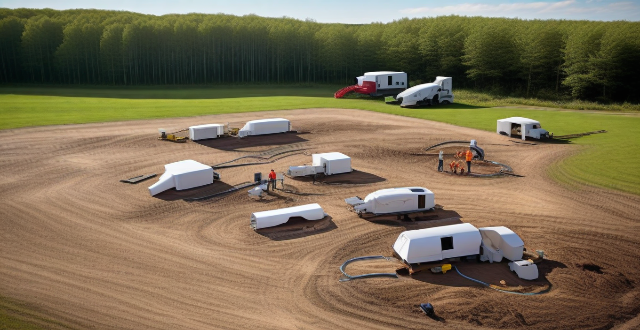This article discusses the impact of nuclear energy on radiation levels in the environment, highlighting the release of radioactive materials through air emissions, liquid discharges, and solid waste disposal. It also outlines mitigation measures taken at different stages of the nuclear fuel cycle, including design and construction, operation and maintenance, waste management, and decommissioning and site restoration. The article emphasizes that significant measures are taken to ensure the safe and reliable use of nuclear energy as a source of power.

Impact of Nuclear Energy on Radiation Levels
Nuclear energy is a source of power that has been used for decades. However, the use of nuclear energy has raised concerns about its impact on radiation levels in the environment. In this article, we will discuss how the use of nuclear energy affects radiation levels and what measures are taken to mitigate this.
Release of Radioactive Materials
During the operation of a nuclear power plant, radioactive materials can be released into the environment through various pathways such as air emissions, liquid discharges, and solid waste disposal. These releases can increase radiation levels in the surrounding areas and potentially harm human health and the ecosystem.
Air Emissions
Nuclear power plants release small amounts of radioactive gases and particulate matter into the atmosphere during normal operations. These emissions are typically controlled by filtration systems and monitored regularly to ensure they remain within acceptable limits.
Liquid Discharges
Nuclear power plants also generate liquid waste that contains low levels of radioactivity. This waste is treated and discharged into nearby water bodies or stored in tanks for further processing. The treatment process involves removing most of the radioactive material before releasing it into the environment.
Solid Waste Disposal
Nuclear power plants produce solid waste, including spent fuel rods, which contain high levels of radioactivity. This waste is typically stored on-site in specially designed facilities until it can be transported to a permanent disposal site. The transportation and storage of this waste require strict safety measures to prevent any release of radioactive materials into the environment.
Mitigation Measures
To mitigate the impact of nuclear energy on radiation levels, several measures are taken at different stages of the nuclear fuel cycle. These measures include:
Design and Construction
Nuclear power plants are designed with multiple layers of containment to prevent any release of radioactive materials into the environment. The design also includes redundant systems and backup power supplies to ensure continuous monitoring and control of the plant's operations.
Operation and Maintenance
Regular maintenance and inspections are conducted to identify and address any potential issues that could lead to a release of radioactive materials. Personnel working at nuclear power plants receive extensive training on safety procedures and emergency response protocols.
Waste Management
Strict regulations govern the management of all types of radioactive waste generated by nuclear power plants. These regulations ensure that waste is properly treated, stored, and disposed of in a safe manner to minimize any potential impact on the environment and human health.
Decommissioning and Site Restoration
When a nuclear power plant reaches the end of its useful life, it undergoes a decommissioning process that involves dismantling the facility and removing all radioactive materials. The site is then restored to its original condition or repurposed for other uses.
In conclusion, while the use of nuclear energy has raised concerns about its impact on radiation levels in the environment, significant measures are taken throughout the entire nuclear fuel cycle to mitigate these effects. These measures help ensure that nuclear power remains a safe and reliable source of energy for generations to come.